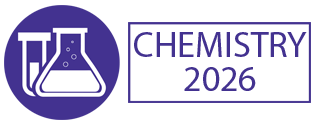Silicon
Silicon Is The Second Most Abundant Element On Earth After Oxygen. It Is An Essential Component Of All Living Organisms And Is Found In Air, Water, And Soil. Silicon Is Also The Foundation Of Modern Industrial Activities, Used In Semiconductors, Solar Cells, Lenses, And A Host Of Other Products. Silicon Is Non-Metallic And Has Special Electrical Properties That Make It Suitable For Use In Semiconductor Components. Silicon's Ability To Assume The Same Crystalline Form As Diamond—The Hardest Substance Known—Makes It An Ideal Coating For Electronic Components Exposed To Grinding, High Temperatures And Abrasion. When Silicon Is Mixed With Oxygen, It Forms Silicon Dioxide (Sio2), A Component Of Sand, Glass, And Rocks. Silicon Dioxide Also Forms The Basis Of Many Modern Materials, Such As Quartz And The Hard Protective Coatings On Metals, Plastics And Other Materials. When Mixed With Other Elements, It Can Produce Ferrosilicon, Used In Steel Making, And Ultrapure Silicon Used In Computer Chip Manufacturing. Silicon Has High Thermal Conductivity, Making It Suitable For Aerospace And Cryogenic Engineering Applications. It Is Also Light Weight, Malleable And Resilient. Silicon Can Withstand High Voltage Electricity And Heat, And Can Repel Heat Away From Its Surface, Making It Useful In Insulation Materials. Silicon Is Used Extensively In Optical Fibers, Optical Lens Systems, And Temperature-Resistant Coatings For Different Surfaces. It Is Also Formed Into Fibers Derived From Silicon Dioxide, And Is Used To Make Molds For Injection Molding Of Thermoplastics. High-Purity Semiconductor Grade Silicon Is Used In Silicon Wafer Fabrication For The Production Of Integrated Circuits. These Microchips Are Found In Computers, Mobile Devices, Automotive Systems And Biomedical Instruments, Helping To Make Life Safer, Faster And More Efficient. Silicon Is Also Found In The Nanotechnology Field, Allowing For Tiny, Highly Efficient Transistors And Other Components For A Wide Range Of Science And Engineering Tasks. In Conclusion, Silicon Is A Highly Versatile Element That Has Revolutionized The Way We Live Today. Its Properties Make It Suitable For Numerous Industrial And Scientific Applications, From Making High-Tech Materials To Running Computer Chips. It Is A Valuable Resource For The Advancement Of Modern Society, And Will Continue To Be So For Many Years To Come.

Hossam A Gabbar
Ontario Tech University, Canada
Victor John Law
University College Dublin, Ireland
Alexander Bagaturyants
National Research Nuclear University MEPhI, Russian Federation
Sergey Suchkov
N.D. Zelinskii Institute for Organic Chemistry of the Russian Academy of Sciences, Russian Federation
Shree Niwas Chaturvedi
Centre for Aptitude Analysis and Talent Search, India
Pieter Samyn
SIRRIS, Belgium




Title : Advances in plasma-based radioactive waste treatment
Hossam A Gabbar, Ontario Tech University, Canada
Title : Unraveling the ultrastructure and functions of the neuronal membrane skeleton using super-resolution fluorescence microscopy
Zhou Ruobo, Djillali Liabes University of Sidi Bel Abbes, Algeria
Title : Solar box cooker dehydration, and relative humidity endpoint detection, of lamiaceae culinary leaves on the island of Crete
Victor John Law, University College Dublin, Ireland
Title : Nutrient and heavy metal loads from the Ribeiras to Coastal zones: A land-ocean continuum perspective in Madeira Island
Aracelis Del Carmen Narayan Rajnauth, University of Porto, Portugal
Title : Prospective polyoxometalate-based covalent organic framework heterogeneous catalysts
Arash Ebrahimi, Comenius University Bratislava, Slovenia
Title : Eliminating implant failure in humans with nano chemistry: 30,000 cases and counting
Thomas J Webster, Brown University, United States